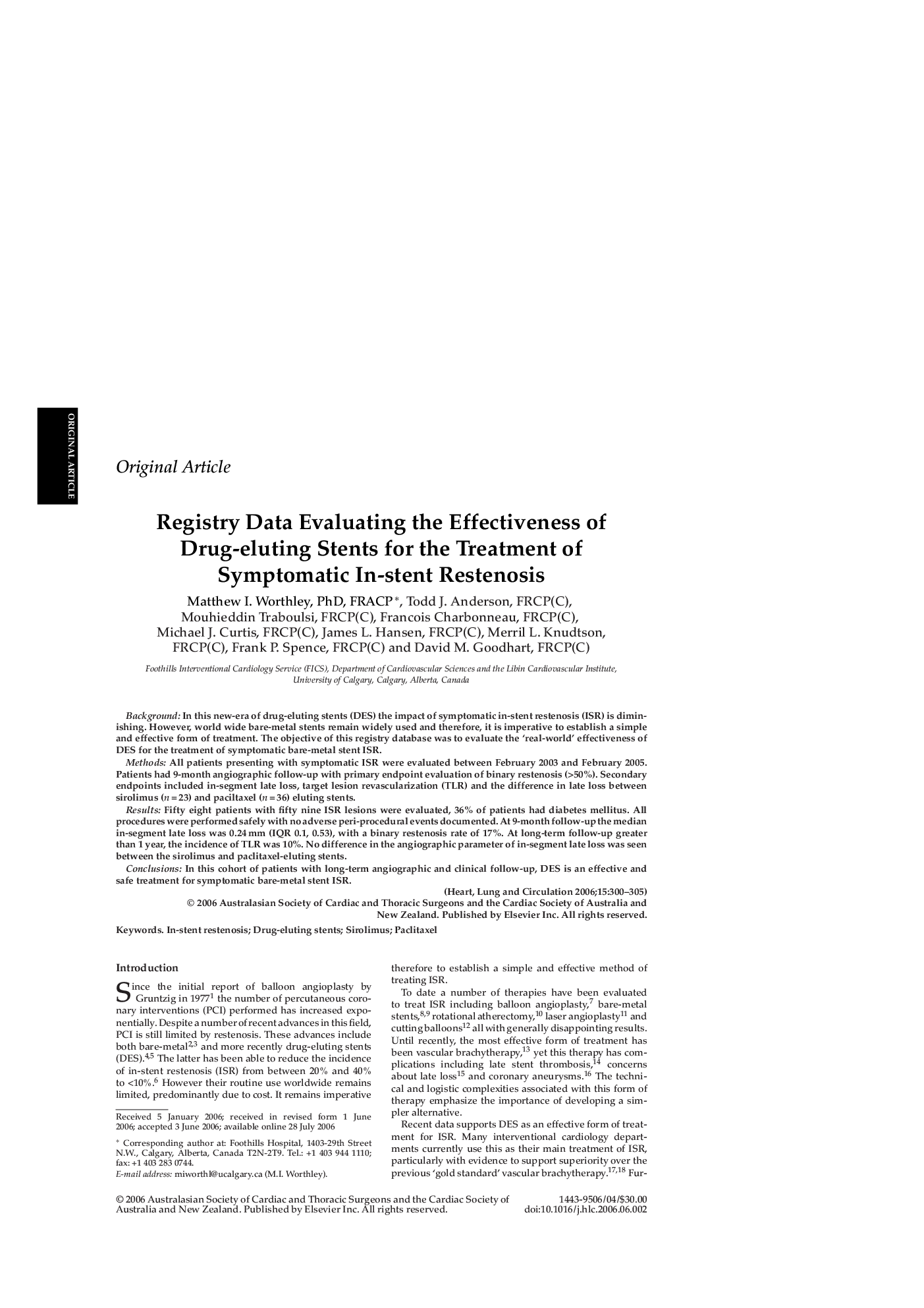| Article ID | Journal | Published Year | Pages | File Type |
|---|---|---|---|---|
| 2921637 | Heart, Lung and Circulation | 2006 | 6 Pages |
BackgroundIn this new-era of drug-eluting stents (DES) the impact of symptomatic in-stent restenosis (ISR) is diminishing. However, world wide bare-metal stents remain widely used and therefore, it is imperative to establish a simple and effective form of treatment. The objective of this registry database was to evaluate the ‘real-world’ effectiveness of DES for the treatment of symptomatic bare-metal stent ISR.MethodsAll patients presenting with symptomatic ISR were evaluated between February 2003 and February 2005. Patients had 9-month angiographic follow-up with primary endpoint evaluation of binary restenosis (>50%). Secondary endpoints included in-segment late loss, target lesion revascularization (TLR) and the difference in late loss between sirolimus (n = 23) and paciltaxel (n = 36) eluting stents.ResultsFifty eight patients with fifty nine ISR lesions were evaluated, 36% of patients had diabetes mellitus. All procedures were performed safely with no adverse peri-procedural events documented. At 9-month follow-up the median in-segment late loss was 0.24 mm (IQR 0.1, 0.53), with a binary restenosis rate of 17%. At long-term follow-up greater than 1 year, the incidence of TLR was 10%. No difference in the angiographic parameter of in-segment late loss was seen between the sirolimus and paclitaxel-eluting stents.ConclusionsIn this cohort of patients with long-term angiographic and clinical follow-up, DES is an effective and safe treatment for symptomatic bare-metal stent ISR.
